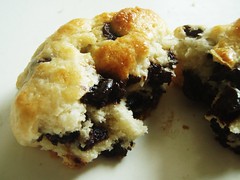 Nothing sops up the pains from the previous night more than English scones! ...Or at least that was the excuse I used to convince my cousin to help me bake these. My very close cousin arrived the night before, just in time to partake in our gallivanting activities into the wee hours of the morning. The following morning I had to drag her out of bed and force her to participate in my ritual weekend bakings (I'm such a horrible host, right). I suppose scones really could cure the discomfort caused by a long night of secretive activities, but I was honestly more concerned with baking than the comfort of my cousin.
Nothing sops up the pains from the previous night more than English scones! ...Or at least that was the excuse I used to convince my cousin to help me bake these. My very close cousin arrived the night before, just in time to partake in our gallivanting activities into the wee hours of the morning. The following morning I had to drag her out of bed and force her to participate in my ritual weekend bakings (I'm such a horrible host, right). I suppose scones really could cure the discomfort caused by a long night of secretive activities, but I was honestly more concerned with baking than the comfort of my cousin.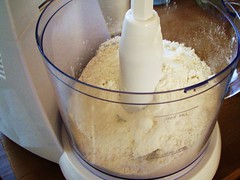
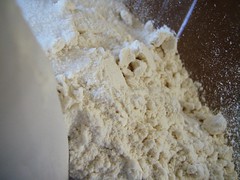
I was so excited we got to use my prized possession- my food processor!
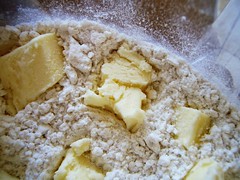
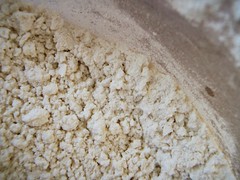
Although you may be attention deprived, my lovely food processor, you are indeed greatly appreciated.
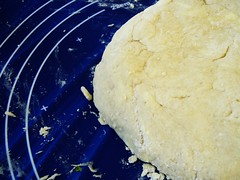
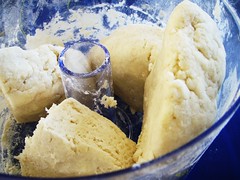
We formed the big sticky wad of dough into one large circle, and then divided it into fourths.
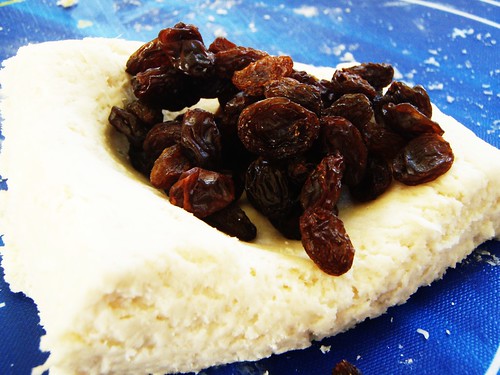
We couldn't come to a conclusive agreement as to what type of scones these should be. So by dividing into fourths (and knowing that the recipe makes 8 scones) we could have four different varieties of scones, with two of each type.
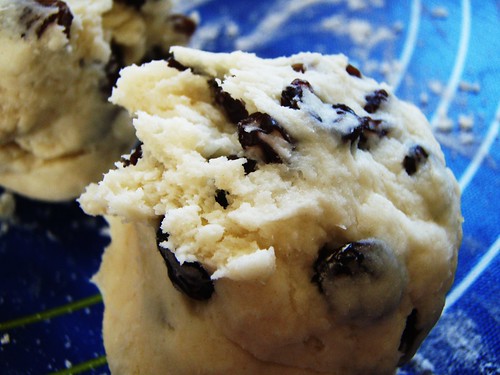
We decided upon raisin scones, chocolate chip scones, cheddar scones, and blueberry scones. All added variations were eyeballed and packed into the dough disorderly (Obviously not a typical "me" idea, but my cousin just so happened to be the girl version of my boyfriend, so I had to let it slide).

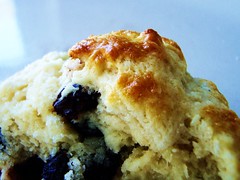
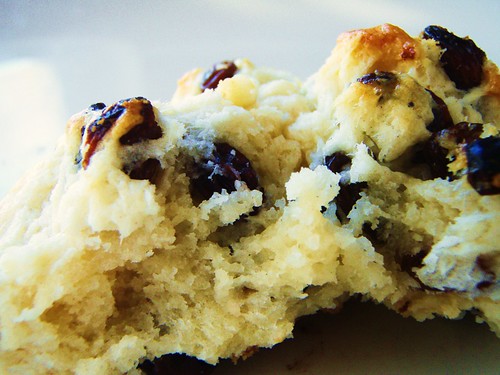
Enter specimen 1: raisin scones. After the allotted time in the oven, we took one out to test. We split it in half and noticed the insides were still raw and doughy. I didn't understand... I divided the dough into the correct portions and baked them for the appropriate time.
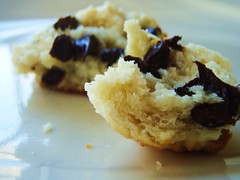
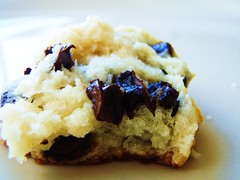
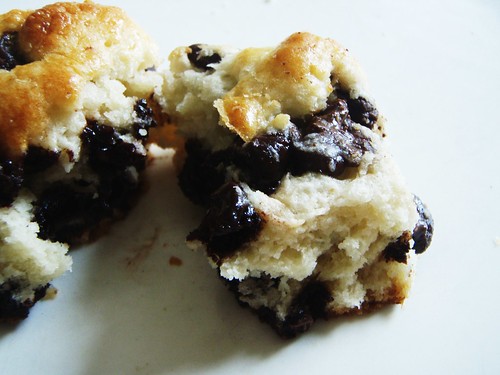
Enter #2: chocolate chip scones. After eating my fair share of raw scone dough, I made an executive decision to put them back in the oven. After about 5 minutes more or so, I deemed it the appropriate time to take them out. They were much better, although the outside was much harder and crustier than the gooey insides.
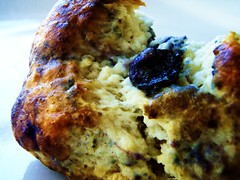
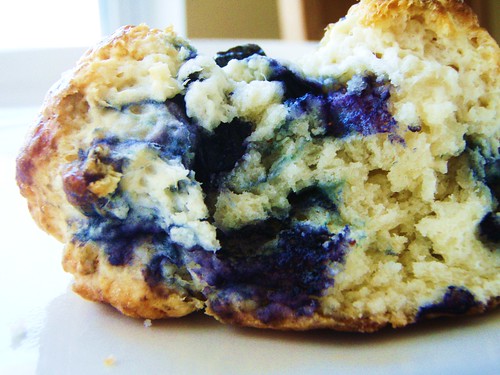
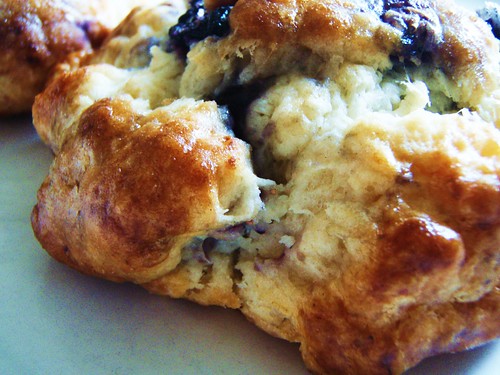
#3: blueberry scones- my cousin's idea. I'm not doubting her idea for the blueberries, just perhaps the application of them. The only available blueberries I had in my house were frozen, so I allowed her to do the appropriate thawing, microwaving, and drying of the berries. Let's just say that not only were these colored brightly purple in some parts, but also a little too wet. And by wet, I mean gooey and probably undercooked.
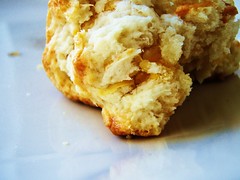
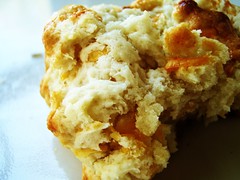
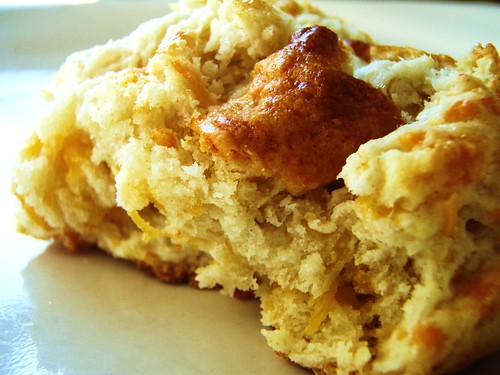
And finally, #4, the cheddar cheese scones. These were my second favorite (chocolate chip being number one- duh). My favorite story out of this whole incident was when I rushed my cousin out of the house to get to school on time (because I still had classes to attend, being the productive student and all) so she had to quickly grab a snack (because she needed to be fed every hour on the hour). Once she got to school, she took a bite of her assumed chocolate chip scone, only to realize it was a raisin scone. What a disappointment.
---RECIPE---
Taken from Cook's Illustrated
ingredients:
2 cups unbleached all-purpose flour
1 tablespoon baking powder
3 tablespoons sugar
1/2 teaspoon table salt
5 tablespoons unsalted butter , chilled and cut into 1/4-inch pieces
1/2 cup currants (replaced by our handfulls of random ingredients)
1 cup heavy cream
directions:
1. Adjust oven rack to middle position and heat oven to 425 degrees.
2. Place flour, baking powder, sugar, and salt in large bowl or workbowl of food processor fitted with steel blade. Whisk together or pulse six times.
3. If making by hand, use two knives, a pastry blender, or your fingertips and quickly cut in butter until mixture resembles coarse meal, with a few slightly larger butter lumps. Stir in currants. If using food processor, remove cover and distribute butter evenly over dry ingredients. Cover and pulse 12 times, each pulse lasting 1 second. Add currants and pulse one more time. Transfer dough to large bowl.
4. Stir in heavy cream with rubber spatula or fork until dough begins to form, about 30 seconds.
5. Transfer dough and all dry, floury bits to countertop and knead dough by hand just until it comes together into a rough, slightly sticky ball, 5 to 10 seconds. Following illustrations below, cut scones into 8 wedges. Place wedges on ungreased baking sheet. (Baking sheet can be wrapped in plastic and refrigerated for up to 2 hours.)
6. Bake until scone tops are light brown, 12 to 15 minutes. Cool on wire rack for at least 10 minutes. Serve warm or at room temperature.
amount:
Makes 8 scones. (Next time I'd definitely make a little more, so each scone will be smaller and bake more thoroughly)
No comments:
Post a Comment